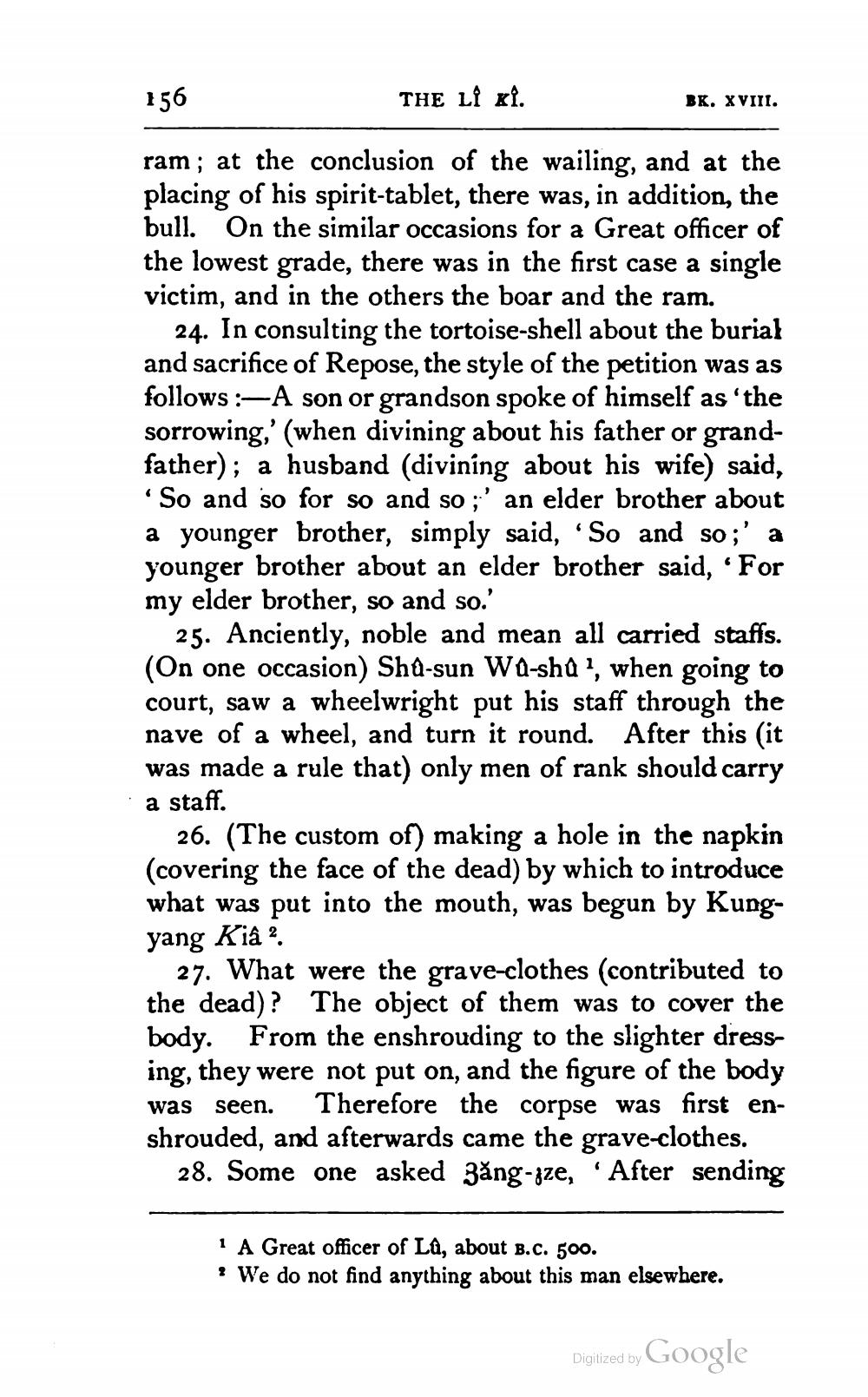________________
156
THE LÎ KI.
BK. XVIII.
ram; at the conclusion of the wailing, and at the placing of his spirit-tablet, there was, in addition, the bull. On the similar occasions for a Great officer of the lowest grade, there was in the first case a single victim, and in the others the boar and the ram.
24. In consulting the tortoise-shell about the burial and sacrifice of Repose, the style of the petition was as follows :-A son or grandson spoke of himself as 'the sorrowing,' (when divining about his father or grandfather); a husband (divining about his wife) said,
So and so for so and so ;' an elder brother about a younger brother, simply said, 'So and so;' a younger brother about an elder brother said, 'For my elder brother, so and so.'
25. Anciently, noble and mean all carried staffs. (On one occasion) Shd-sun Wa-sha !, when going to court, saw a wheelwright put his staff through the nave of a wheel, and turn it round. After this (it was made a rule that) only men of rank should carry a staff.
26. (The custom of) making a hole in the napkin (covering the face of the dead) by which to introduce what was put into the mouth, was begun by Kungyang Kia 2.
27. What were the grave-clothes (contributed to the dead)? The object of them was to cover the body. From the enshrouding to the slighter dressing, they were not put on, and the figure of the body was seen. Therefore the corpse was first enshrouded, and afterwards came the grave-clothes.
28. Some one asked 3ăng-gze, ‘After sending
1 A Great officer of La, about B.C. 500. . We do not find anything about this man elsewhere.
Digitized by Google




